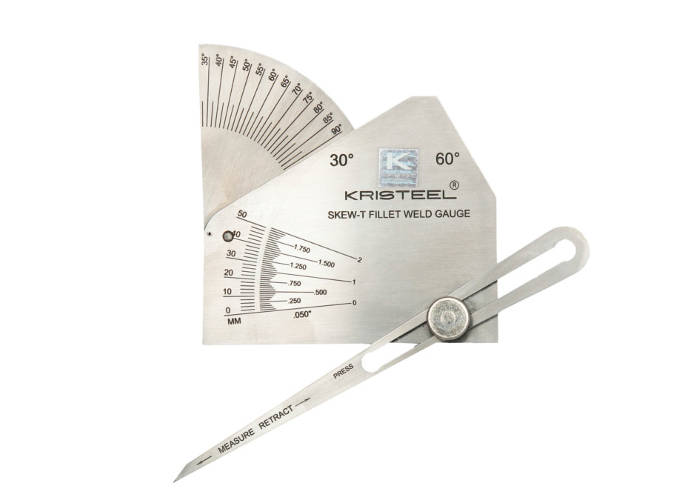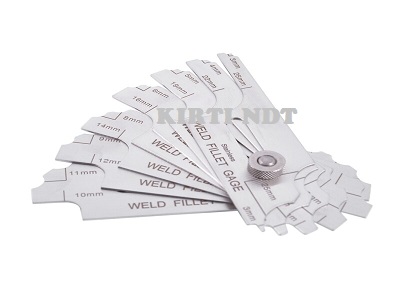Gauge Fillet Weld Basics: Best Practices and Common Mistakes
Gauge Fillet Weld Basics: Best Practices and Common Mistakes
Blog Article
Innovative Approaches to Fillet Weld Inspection and Testing: Enhancing Weld High Quality and Conformity Requirements
In the realm of welding, the high quality and honesty of fillet welds play a crucial role in making sure the architectural stability and reliability of numerous commercial elements. With the continuous drive for improved effectiveness and compliance with strict criteria, the exploration of ingenious approaches to fillet weld assessment and screening has actually come to be crucial. As markets progress, the traditional methods might no more be enough in satisfying the needs of modern-day welding applications (Gauge Fillet Weld). By accepting innovative modern technologies and techniques, a new horizon of possibilities arises in the world of weld quality assessment and adherence to conformity standards.
Advanced Non-Destructive Testing Approaches
Utilizing state-of-the-art technologies, progressed non-destructive screening methods play a critical duty in making sure the honesty and high quality of fillet welds. These approaches, such as phased variety ultrasonic testing (PAUT) and magnetic fragment screening (MPT), offer comprehensive understandings into the weld's interior framework without creating any damages to the product. PAUT, for circumstances, utilizes multiple ultrasonic components to check the weld from various angles, giving a detailed visualization of prospective issues like absence of fusion or splits.
In A Similar Way, MPT works in finding surface-breaking problems by applying an electromagnetic field and iron fragments to the weld area. This technique is particularly useful for determining interruptions that might endanger the weld's toughness. By utilizing these advanced non-destructive testing techniques, weld examiners can properly examine the top quality of fillet welds, guaranteeing compliance with market requirements and policies. The capacity to find flaws early on not just boosts weld high quality yet likewise avoids pricey rework or failings in structural integrity, underscoring the value of these cutting-edge testing approaches in welding assessments.
Robotics and Automation in Inspection

The assimilation of robotics and automation has revolutionized the examination process for fillet welds, improving performance and precision in top quality assessment. Robotics supply specific control and repeatability in inspecting welds, ensuring reputable and consistent results. Automated systems can be programmed to follow details assessment courses, making sure thorough protection of welds and reducing the danger of human error.
Robot assessment systems geared up with innovative sensors can identify and determine weld features with high accuracy, providing thorough data for analysis. These systems can identify problems such as fractures, lack of combination, and porosity, allowing prompt corrective activities to be taken. In addition, robotics and automation permit real-time data collection and evaluation, giving prompt comments to operators and assisting in fast decision-making processes.
Moreover, using robotics and automation in fillet weld inspection improves general productivity by lowering examination times and enhancing assessment throughput. By improving the assessment procedure, makers can ensure weld quality and conformity standards are fulfilled efficiently, eventually bring about cost savings and improved item quality.
Utilizing Expert System for Evaluation
Fabricated knowledge plays an essential duty in boosting the effectiveness and precision of analysis in fillet weld evaluation procedures. AI algorithms can quickly refine substantial quantities of information from weld assessments, identifying defects or disparities that may be testing to identify with the nude eye.
Additionally, AI systems can pick up from previous inspection information, continually improving their capacity to recognize potential problems and inconsistencies in fillet welds. This flexible understanding capability boosts the overall high quality control procedure, lowering the possibility of human error and guaranteeing that welds satisfy the called for requirements. By incorporating artificial knowledge into fillet weld analysis, markets can accomplish higher levels of effectiveness, consistency, and compliance in their assessment practices.
Portable Devices for On-Site Inspection
Enhancing area inspection performance, the fostering of portable tools changes on-site analysis procedures for fillet welds. These devices have a peek at this site provide flexibility and ease, allowing examiners to conduct complete exams in different areas, consisting of challenging or remote environments. Portable devices such as ultrasonic testing gadgets, magnetic fragment evaluation tools, and digital radiography systems supply real-time information and high-resolution imaging capacities, enabling fast decision-making and instant responses on weld quality.
One substantial advantage of portable tools is their capability to improve evaluation procedures, minimizing downtime and improving general efficiency - Gauge Fillet Weld. Inspectors can quickly deliver these devices to different job sites, eliminating the need for transferring hefty equipment or elements to off-site centers. Additionally, the transportability of these tools promotes cost-effectiveness by minimizing transportation costs and speeding up evaluation timelines
Furthermore, the use of portable tools for on-site examination advertises proactive quality assurance actions, as inspectors can promptly recognize and resolve any type of prospective welding flaws or disparities. By incorporating these ingenious innovations into on-site evaluation methods, welding experts can guarantee compliance with market criteria and enhance weld quality, eventually bring about improved architectural stability and security in various welding applications.
Combination of Data Monitoring Solution

Having actually optimized on-site evaluation processes via the use Check Out Your URL of mobile devices, the following phase involves the smooth integration of information administration systems to even more enhance performance and information analysis capacities in fillet weld inspection and screening. By integrating data monitoring systems right into the assessment process, companies can simplify information collection, storage, and analysis. This combination enables real-time tracking of weld quality, prompt identification of problems, and punctual decision-making to correct any issues that might occur throughout the assessment process.
The combination of information administration systems makes it possible for seamless communication in between various stakeholders involved in the inspection process, promoting cooperation and boosting total top quality control steps. Eventually, the integration of information administration systems offers to boost the standards of fillet weld inspection and testing, ensuring conformity with sector guidelines and improving weld quality.
Final Thought
In final thought, innovative methods to fillet weld assessment and screening have actually substantially enhanced weld high quality and compliance standards. Advanced non-destructive testing approaches, robotics, automation, fabricated intelligence, mobile tools, and data administration systems have revolutionized the method weld assessments are carried out. By making use of these modern technologies, markets can ensure that welds meet the needed quality Our site criteria and laws, inevitably enhancing overall effectiveness and safety in welding processes.

Having actually enhanced on-site assessment procedures through the utilization of portable tools, the next phase entails the seamless assimilation of data management systems to better enhance efficiency and data evaluation capacities in fillet weld evaluation and screening. Eventually, the combination of data management systems serves to boost the criteria of fillet weld evaluation and testing, ensuring conformity with industry policies and improving weld quality.

Report this page